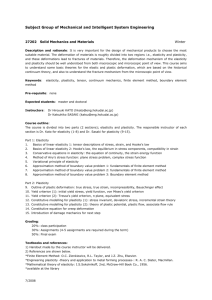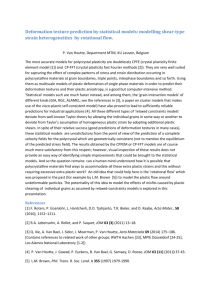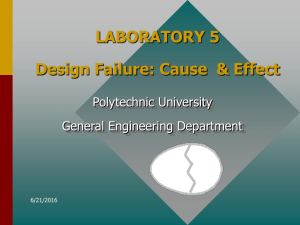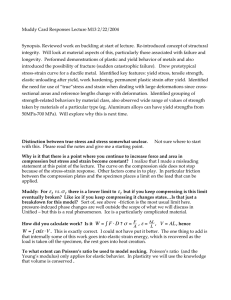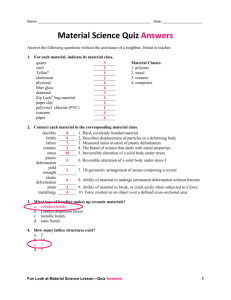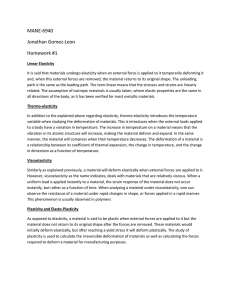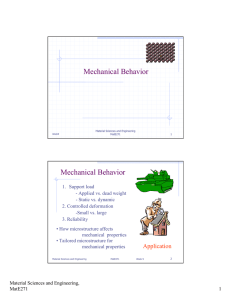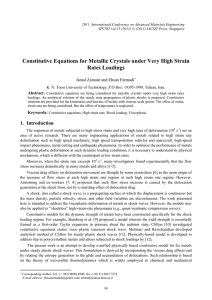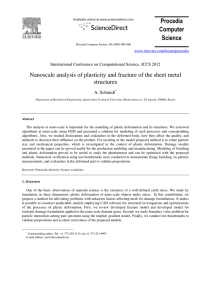科目名 Course Title Solid Mechanics and Materials(固体力学E
advertisement
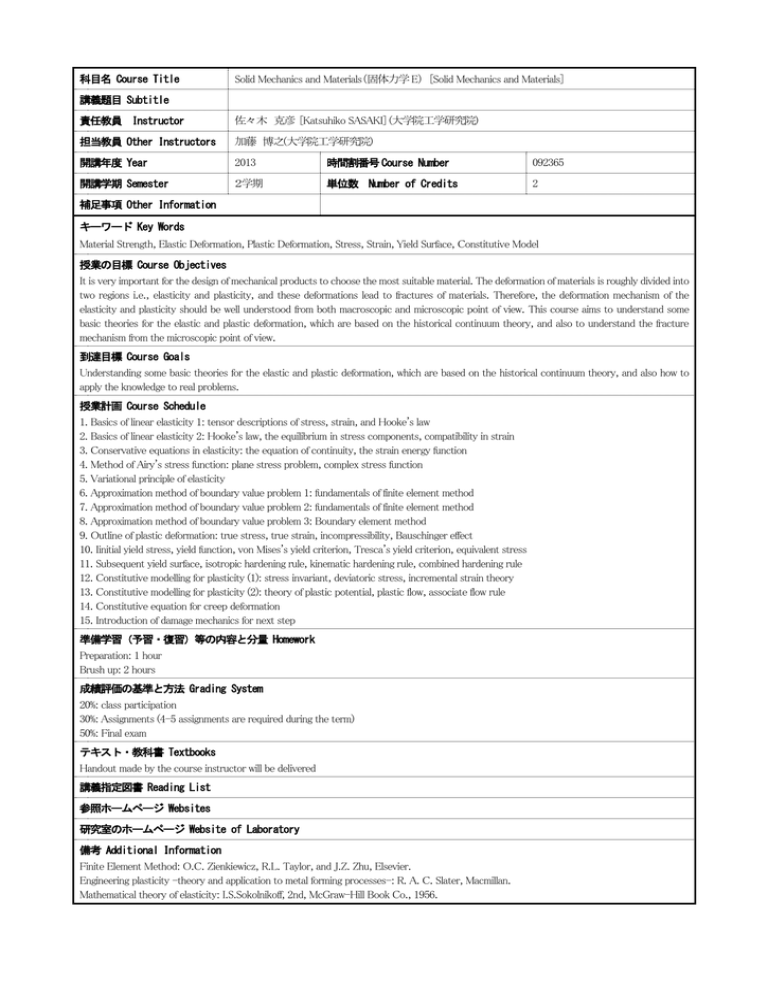
科目名 Course Title Solid Mechanics and Materials(固体力学 E) [Solid Mechanics and Materials] 講義題目 Subtitle 責任教員 Instructor 佐々木 克彦 [Katsuhiko SASAKI] (大学院工学研究院) 担当教員 Other Instructors 加藤 博之(大学院工学研究院) 開講年度 Year 2013 時間割番号 Course Number 092365 開講学期 Semester 2学期 単位数 Number of Credits 2 補足事項 Other Information キーワード Key Words Material Strength, Elastic Deformation, Plastic Deformation, Stress, Strain, Yield Surface, Constitutive Model 授業の目標 Course Objectives It is very important for the design of mechanical products to choose the most suitable material. The deformation of materials is roughly divided into two regions i.e., elasticity and plasticity, and these deformations lead to fractures of materials. Therefore, the deformation mechanism of the elasticity and plasticity should be well understood from both macroscopic and microscopic point of view. This course aims to understand some basic theories for the elastic and plastic deformation, which are based on the historical continuum theory, and also to understand the fracture mechanism from the microscopic point of view. 到達目標 Course Goals Understanding some basic theories for the elastic and plastic deformation, which are based on the historical continuum theory, and also how to apply the knowledge to real problems. 授業計画 Course Schedule 1. Basics of linear elasticity 1: tensor descriptions of stress, strain, and Hooke's law 2. Basics of linear elasticity 2: Hooke's law, the equilibrium in stress components, compatibility in strain 3. Conservative equations in elasticity: the equation of continuity, the strain energy function 4. Method of Airy's stress function: plane stress problem, complex stress function 5. Variational principle of elasticity 6. Approximation method of boundary value problem 1: fundamentals of finite element method 7. Approximation method of boundary value problem 2: fundamentals of finite element method 8. Approximation method of boundary value problem 3: Boundary element method 9. Outline of plastic deformation: true stress, true strain, incompressibility, Bauschinger effect 10. Iinitial yield stress, yield function, von Mises's yield criterion, Tresca's yield criterion, equivalent stress 11. Subsequent yield surface, isotropic hardening rule, kinematic hardening rule, combined hardening rule 12. Constitutive modelling for plasticity (1): stress invariant, deviatoric stress, incremental strain theory 13. Constitutive modelling for plasticity (2): theory of plastic potential, plastic flow, associate flow rule 14. Constitutive equation for creep deformation 15. Introduction of damage mechanics for next step 準備学習(予習・復習)等の内容と分量 Homework Preparation: 1 hour Brush up: 2 hours 成績評価の基準と方法 Grading System 20%: class participation 30%: Assignments (4-5 assignments are required during the term) 50%: Final exam テキスト・教科書 Textbooks Handout made by the course instructor will be delivered 講義指定図書 Reading List 参照ホームページ Websites 研究室のホームページ Website of Laboratory 備考 Additional Information Finite Element Method: O.C. Zienkiewicz, R.L. Taylor, and J.Z. Zhu, Elsevier. Engineering plasticity -theory and application to metal forming processes-: R. A. C. Slater, Macmillan. Mathematical theory of elasticity: I.S.Sokolnikoff, 2nd, McGraw-Hill Book Co., 1956.
